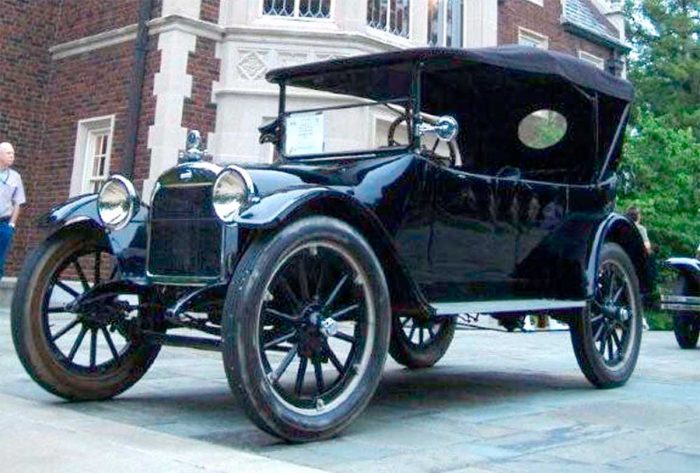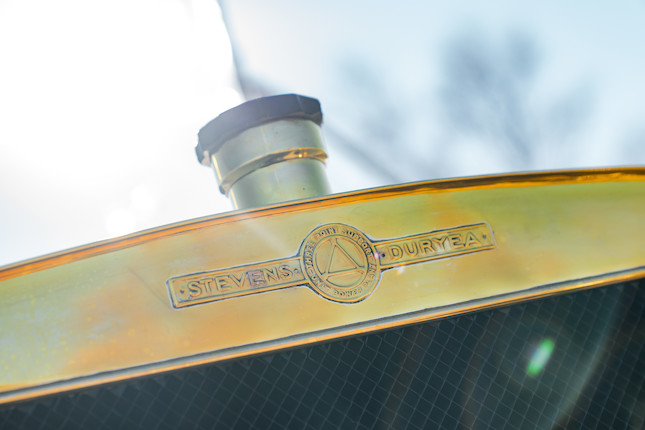-
Posts
752 -
Joined
-
Last visited
Content Type
Forums
Gallery
Events
Posts posted by Chris Paulsen
-
-
-
Interested in anything related to 1904 Sommer, 1906-10 Tourist, 1910-12 Auburn, 4-cylinder Rutenber engines. We'll be at our spaces behind the old stadium RSE 29-31.
-
Brass radiator, circa 1910. Possibly Moline. $475.

1901-03 Curved Dash Oldsmobile radiator. $225pair of 24” Hayes wire wheels. $475
Brass carbide generator. 12” tall for smaller car. Maybe 1-cylinder REO or 2-cylinder Maxwell. Older reproduction. $775pair of Solar 956A headlights. $325
Can deliver to Hershey. Contact me for more photos and more information. -
Brass radiator, circa 1910. Possibly Moline. $475.

1901-03 Curved Dash Oldsmobile radiator. $225
pair of 24” Hayes wire wheels. $475

Brass carbide generator. 12” tall for smaller car. Maybe 1-cylinder REO or 2-cylinder Maxwell. Older reproduction. $775
pair of Solar 956A headlights. $325

Can deliver to Hershey. Contact me for more photos and more information.-
 1
1
-
-
1911 Peerless
-
 2
2
-
-
Overland, likely 1911.
-
Who owns it now?

The 1954 registration from when Bud Kornhoff owned it is on eBay. Not my item, but a neat part of the car’s history. -
It would have been issued before July 1913. They started with the A series in 1907, so this was likely made in late 1912 or 1913, I believe.
-
They definitely did not number them consecutively. The three remaining 1910’s are numbered in the 1500, 5500 and 5700 range. That was based on the engine number, and I believe they received two different shipments of engines from Rutenber- that’s why there’s such a jump.
-
It is likely from the side of the body just behind the firewall on both sides. Here are the two on our 1910. I’m not sure when they separated the motor number from the serial number.


-
 1
1
-
-
1906-07 Rambler.
-
 5
5
-
 1
1
-
-
1916 Oakland.

-
 4
4
-
-
It's a 1906-7 Stevens-Duryea Model U - six-cylinder. That radiator emblem is unique.

-
 5
5
-
 1
1
-
-
To address the original poster. I have seen several Pratt-Elkharts in person. I did a quick online search and found 4 different cars on the first page of results alone.
There are many unique survivors of brass-era cars.
Here's our 1904 Sommer, which I believe is the sole survivor. The Sommer Motor Company built cars for 11 months. Their total production was approximately 100 vehicles. The photos are two years old. We're currently restoring it.
-
 12
12
-
 1
1
-
-
Absolutely a 1911 Cadillac Touring.

-
 2
2
-
-
A quick update….
The disassembly, inspection, archeology, and assessment continues….Stamped inside the body, upside down, in Roman numerals is the number 14 (XIV), corresponding with the painted number 14 inside the rear door (shown in an earlier post). It was stamped (presumably) as someone was standing behind the car, leaning into the car. That’s why it’s upside down. It’s stamped on the main body, and removable tonneau, right next to each other.
-
 8
8
-
-
Thanks for the comments. I made a book for the Auburn we just finished. It shows some of the authentic details we tried to retain. None of the judges at Hershey or Pebble wanted to see it. Even when I referenced it.
Here are a couple more interesting details. Cast bronze spring hangers. And all of the brackets attached to the frame are punched with corresponding marks. All the way up to 10 pin punch marks.

And an example of rough the rear axle casting is compared to the axle tube. No pitting.

-
 5
5
-
-
Gentle cleaning to reveal the original pinstriping.


-
 8
8
-
 1
1
-
-
Timken axles…. As marked on the front spindles.

-
 1
1
-
-
More interesting bits (at least to us). It uses a "Kingston Muffler" with built-in cut-out or tuning valve. Was it the same company that built the carburetor?
-
 1
1
-
-
1912 Speedwell.
-
 1
1
-
-
Sagefinds-
I’m not sure. I know Mark Freimiller (Model T Haven) bought it in Dallas, TX around 1996-97. I know the history since then, but not between the 1950’s-1990’s.
I’m not familiar with Billy Hamilton. Did he have a Sommer? -
JFrankin and Luv2wrench - I agree completely. It's just unfortunate that many people (including judges) will just view it as rough paint (and therefore poor restoration) rather than an attempt at a very accurate restoration. Even if I document every bit of the car, few people will ever take the time to ask, much less want to view photos.
-
 2
2
-
-
I’m always amazed at how crude some of these early cars are/were. The cross-members on the frame were shortened with a chisel to clear the body.

The front hubs were exceptionally rough. Not pitted at all, just really rough original machine marks. Do I fill them, and over-restore them? Or paint them as is?


-
 4
4
-
























Early 1900s Kansas City jitney...what is it?
in What is it?
Posted
1903 Toledo. As Terry mentioned, the lamps were accessories. As were the baskets and top.